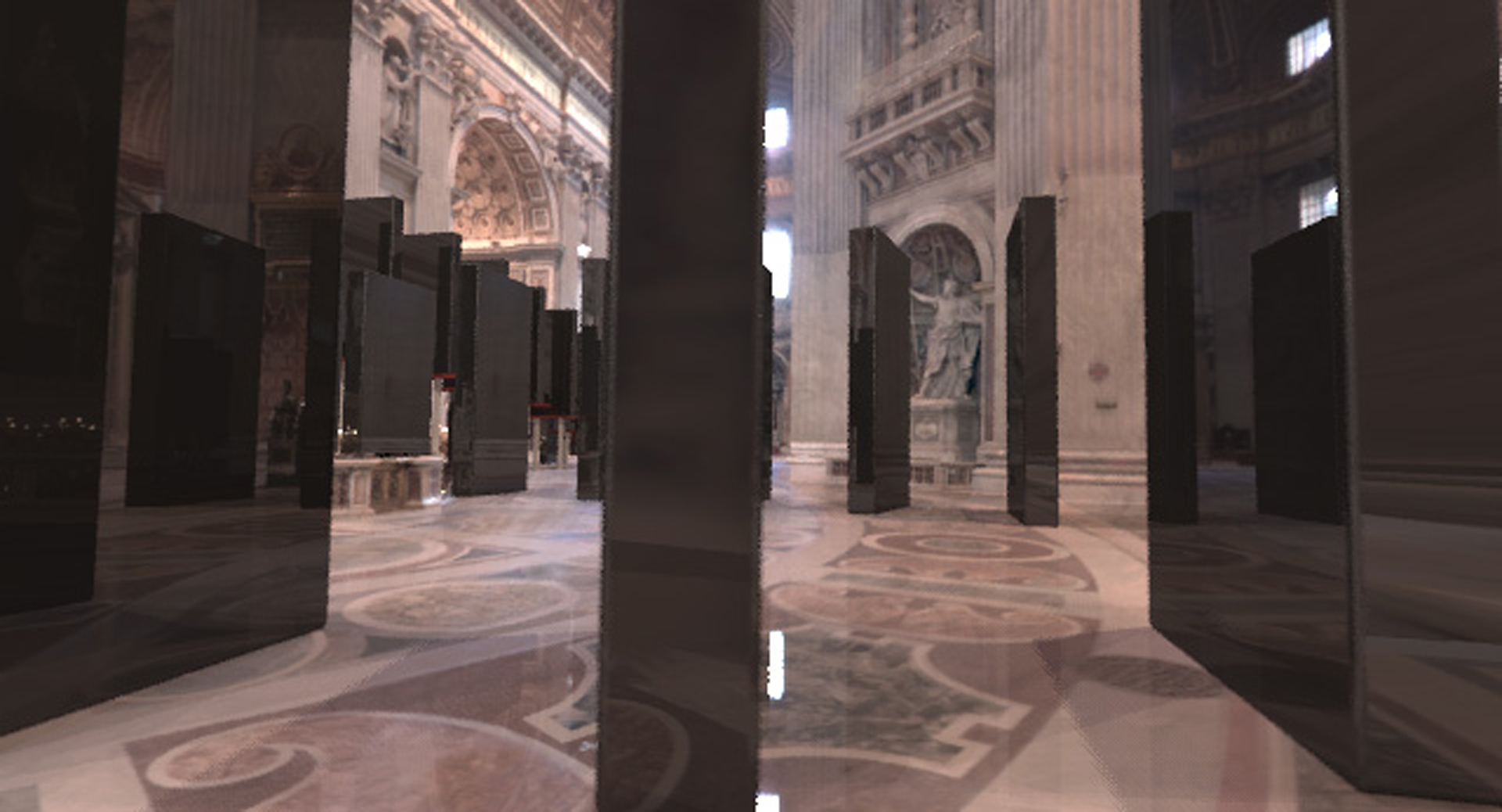“Physically-based real-time lens flare rendering” by Hullin, Eisemann, Seidel and Lee
Conference:
Type(s):
Title:
- Physically-based real-time lens flare rendering
Presenter(s)/Author(s):
Abstract:
Lens flare is caused by light passing through a photographic lens system in an unintended way. Often considered a degrading artifact, it has become a crucial component for realistic imagery and an artistic means that can even lead to an increased perceived brightness. So far, only costly offline processes allowed for convincing simulations of the complex light interactions. In this paper, we present a novel method to interactively compute physically-plausible flare renderings for photographic lenses. The underlying model covers many components that are important for realism, such as imperfections, chromatic and geometric lens aberrations, and antireflective lens coatings. Various acceleration strategies allow for a performance/quality tradeoff, making our technique applicable both in real-time applications and in high-quality production rendering. We further outline artistic extensions to our system.
References:
1. Alspach, T., 2009. Vector-based representation of a lens flare. US Patent 7,526,417.Google Scholar
2. Chaumond, J., 2007. Realistic camera – lens flares. http://graphics.stanford.edu/wikis/cs348b-07/JulienChaumond/FinalProject.Google Scholar
3. Ernst, M., Akenine-Möller, T., and Jensen, H. W. 2005. Interactive rendering of caustics using interpolated warped volumes. In Proc. Graphics Interface’05, 87–96. Google ScholarDigital Library
4. Goodman, J. W. 2005. Introduction to Fourier Optics, 3 ed. Roberts & Company Publishers, December.Google Scholar
5. Hecht, E. 2001. Optics, 4 ed. Addison Wesley, August.Google Scholar
6. Keshmirian, A. 2008. A physically-based approach for lens flare simulation. Master’s thesis, University of California, San Diego.Google Scholar
7. Kilgard, J., 2000. Fast OpenGL-rendering of lens flares. http://www.opengl.org/resources/features/KilgardTechniques/LensFlare/.Google Scholar
8. King, Y. 2001. Game Programming Gems 2. Charles River Media, ch. 2D Lens Flare. Google Scholar
9. Kingslake, R. 1992. Optics in Photography. SPIE Publications.Google Scholar
10. Kolb, C., Mitchell, D., and Hanrahan, P. 1995. A realistic camera model for computer graphics. In Proc. ACM SIGGRAPH, 317–324. Google Scholar
11. Lee, S., Eisemann, E., and Seidel, H.-P. 2010. Real-Time Lens Blur Effects and Focus Control. ACM Transactions on Graphics (Proc. ACM SIGGRAPH’10) 29, 4, 65:1–7. Google Scholar
12. Maughan, C. 2001. Game Programming Gems 2. Charles River Media, ch. Texture Masking for Faster Lens Flare. Google Scholar
13. Oat, C. 2004. Shader X3. Charles River Media, ch. A Steerable Streak Filter.Google Scholar
14. Ogawa, H., 1996. Zoom lens. US Patent 5,537,259.Google Scholar
15. Oh, S. B., Kashyap, S., Garg, R., Chandran, S., and Raskar, R. 2010. Rendering Wave Effects with Augmented Light Field. In Computer Graphics Forum (Proc. Eurographics).Google Scholar
16. Ozaktas, H. M., Zalevsky, Z., and Kutay, M. A. 2001. The fractional Fourier transform with applications in optics and signal processing. Wiley.Google Scholar
17. Perrin, J.-C. 2004. Methods for rapid evaluation of the stray light in optical systems. SPIE, L. Mazuray, P. J. Rogers, and R. Wartmann, Eds., vol. 5249, 392–399.Google Scholar
18. Pixar, 2008. The imperfect lens: Creating the look of Wall-E. Wall-E Three-DVD Box.Google Scholar
19. Polyanskiy, M., 2010. Refractive index database. http://refractiveindex.info.Google Scholar
20. Ritschel, T., Ihrke, M., Frisvad, J. R., Coppens, J., Myszkowski, K., and Seidel, H.-P. 2009. Temporal Glare: Real-Time Dynamic Simulation of the Scattering in the Human Eye. In Computer Graphics Forum (Proc. Eurographics).Google Scholar
21. Schott AG, 2011. Optical glass catalogue, January 2011.Google Scholar
22. Sekulic, D. 2004. GPU Gems. Addison-Wesley, ch. Efficient Occlusion Queries.Google Scholar
23. Sellmeier, W. 1871. Zur Erklärung der abnormen Farbenfolge im Spectrum einiger Substanzen. Annalen der Physik und Chemie 219, 272–282.Google ScholarCross Ref
24. Smith, W. J. 2005. Modern Lens Design. McGraw-Hill.Google Scholar
25. Steinert, B., Dammertz, H., Hanika, J., and Lensch, H. P. A. 2011. General spectral camera lens simulation. In Computer Graphics Forum, vol. 30, to appear.Google Scholar
26. Tocci, M., 2007. Quantifying Veiling Glare (ZEMAX Users’ Knowledge Base). http://www.zemax.com/kb/articles/192/1.Google Scholar
27. Wenzel, C., 2005. Far Cry and DirectX. http://developer.amd.com/media/gpu_assets/D3DTutorial08_FarCryAndDX9.pdf.Google Scholar
28. Woerner, M., 2009. J. J. Abrams Admits Star Trek Lens Flares Are “Ridiculous” (interview). http://io9.com/#!5230278.Google Scholar




